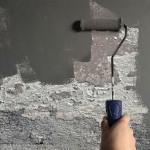Where Does Basement Floor Drain Go?
A basement floor drain is a crucial plumbing fixture that serves as a vital drainage point for excess water in your basement. Understanding where it goes is essential for proper maintenance and ensuring the safety of your home. Here's a comprehensive guide to the destination of basement floor drains:
1. Sump Pump System: The most common destination for basement floor drains is a sump pump system. A sump pump is a submersible pump located in a sump basin—a pit dug in the basement floor. When water enters the drain, it collects in the sump basin, activating the pump. The pump then discharges the water out of the basement, typically through a discharge pipe that leads to the exterior or a nearby storm drain.
2. Dry Well: In some cases, basement floor drains may discharge into a dry well, which is a perforated underground container. As water enters the drain, it flows into the dry well and seeps into the surrounding soil. Dry wells are suitable for areas with well-draining soil and a low water table.
3. Municipal Sewer System: Basement floor drains can also connect directly to the municipal sewer system. This setup allows wastewater to flow into the main sewer lines and be treated at a wastewater treatment plant. However, this option may require permission from the local authorities and adherence to specific building codes.
4. French Drain: Another possible destination for basement floor drains is a French drain, which is a perforated pipe installed in a trench filled with gravel. When water enters the drain, it flows through the pipe and disperses into the surrounding soil. French drains are effective in lowering the water table in areas with high groundwater levels.
5. Exterior Yard: In some older homes, basement floor drains may discharge directly into the exterior yard. While this provides a convenient drainage point, it can lead to water buildup and flooding in the yard during heavy rains. To prevent this, it's recommended to redirect the drain to a more appropriate destination, such as a sump pump system.
Maintaining Your Basement Floor Drain: Regular maintenance of your basement floor drain is crucial to ensure proper drainage and prevent backups. Here are some maintenance tips:
- Clean the drain regularly by removing any debris or hair that may clog it.
- Test the sump pump periodically by pouring water into the sump basin.
- Inspect the discharge pipe for any leaks or damage.
- If you notice any foul odors or standing water around the drain, call a plumber for professional assistance.
By understanding where your basement floor drain goes and following proper maintenance practices, you can ensure that your basement remains dry and free from water damage.

Preventing Basement Floods In Old Homes Drain Tech
Floor Drain Setup Diy Home Improvement Forum

New Basement Drain Line Installation Water Guard Plumbing

Where Do Basement Floor Drains Go A 1 Septic Tank Service Inc

Basement Drains 101 A Simple Guide For Busy Homeowners

What Is A Foundation Drain Mmsd

Basement Weep Holes How They Work And Why

Basement Shower Drain Connects To Floor Redflagdeals Com Forums

What Is Drain Tile Epp Foundation Repair

Sewer Backup Prevention Options For Homeowners City Of Lincoln Ne
See Also








